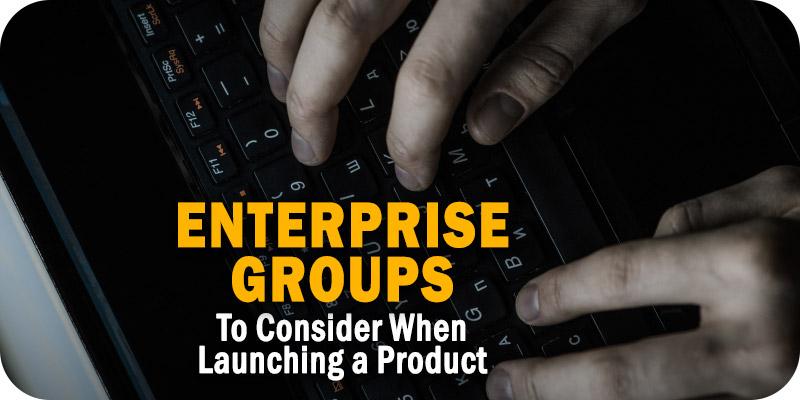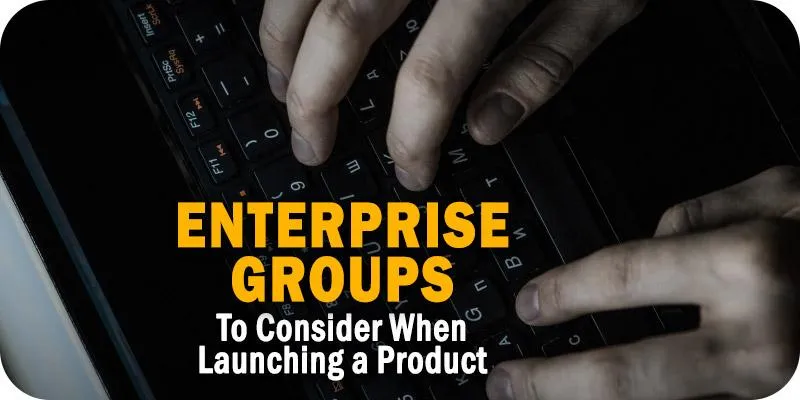3 Core Enterprise Groups to Consider When Preparing Your Product for Launch
Blog: Solutions Review - Business Process Management

As part of Solutions Review’s Expert Insights Series—a collection of contributed articles written by industry experts in enterprise software categories—Nishant Patel, founder and CTO of Contentstack, outlines three enterprise groups you should consider when preparing your product for launch.
 From vision to testing, coming up with an innovative product is hard work. And, a developer’s work doesn’t stop with an end product—there’s still the release to market. Inevitably, a customer will find a bug or a feature that doesn’t operate exactly as expected. Here’s a piece of advice to consider before you hand over your product to the masses: Don’t make it available to everyone all at once.
From vision to testing, coming up with an innovative product is hard work. And, a developer’s work doesn’t stop with an end product—there’s still the release to market. Inevitably, a customer will find a bug or a feature that doesn’t operate exactly as expected. Here’s a piece of advice to consider before you hand over your product to the masses: Don’t make it available to everyone all at once.
When we finish the internal work of building a Contentstack product—and it’s ready for the real world—we make it available to one enterprise “category” at a time. Each category has its own role to play in testing and improving your product, and taking it one at a time will help expand your footprint across a larger swath of companies.
Category 1: Tech-Forward (Refining with the Innovators)
The first group that should see your product is the tech-forward companies. These are the experimenters who live on the cutting edge. Their mindset is: “if you build it, I will use it.” Tech-forward companies are willing to take risks to gain an advantage. This group is also similar to how Geoffrey Moore describes his “early adopters” in his excellent book, Crossing the Chasm.
You will want to partner with these companies to improve your work as you build your product. Beta users often fall into this category. We take their feedback, go into a review session, and say, “what do we need to adjust?” Once that’s complete, we release it back to that customer and go through the cycle again. When Contentstack develops a minimum viable product, we focus on winning this group first. We know that tech-forward companies place a stronger focus on advancing their technology. They have more developers wanting to try the latest and greatest and are willing to work closely with us to improve our product.
Success with tech-forward companies is more than just interest—it’s a stake in the game.
Category 2: Mainstream (Building Broad Appeal)
Once you have proved the usefulness and effectiveness of your product with tech-forward companies, you can open your product to the second category: mainstream.
Mainstream enterprises can be likened to Geoffrey Moore’s early and late majority categories. While tech-forward companies want to work with you to experiment and iterate quickly, mainstream companies prioritize stability. This category is more risk-averse than tech-forward companies. They take steps to stay cutting edge, but their main focus is ensuring new technologies are reliable before adoption. These companies may not want to invest in radically new ideas either because of the expenses related to changing institutional practices.
As you take your product into this category, you must be mindful of data security and compliance, especially in highly-regulated industries like finance or healthcare. Because this is a bigger category than the first, focus on smaller mainstream companies first. They will be able to pivot and adapt more quickly. Then, you can take your learnings for better implementation to the rest of the category.
For example, I would classify Contentstack as transitioning from tech-forward to mainstream. While we’re always trying to be clever and relevant, we also want to see that the bugs have been worked out of new tech before we adopt or recommend it to customers.
Category 3: Prudent (Engaging Long-Term Prospects)
By this point in your development cycle, you should have worked through a series of refinements to create a product that works for the majority. Now you need to take it to the rest of the market. This third, and last category, is more prudent companies.
Prudent companies may be facing challenges that make innovation impractical or even dangerous. For example, some recently retired Boeing 747s received updates via 3.5-inch floppy disks. Updating the aircraft to more modern technology was likely not worth the difficulty of ensuring that a new system would interface properly with older tech. Also, the point of the aircraft is to fly safely, not to have the latest interface.
Some enterprise groups may never come around to your product because they are highly sensitive to risk. And that’s okay. Understanding the mindset and considerations of these enterprise groups will help you as you begin testing, improving, and rolling out your new product. Demonstrating its stability, effectiveness, and quality will also help sell your product. What’s more: you have the feedback to back it up.
The post 3 Core Enterprise Groups to Consider When Preparing Your Product for Launch appeared first on Best BPM Tools, Vendors, Software and BPMS.
